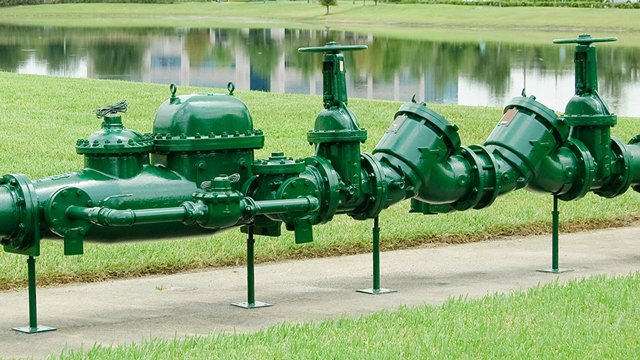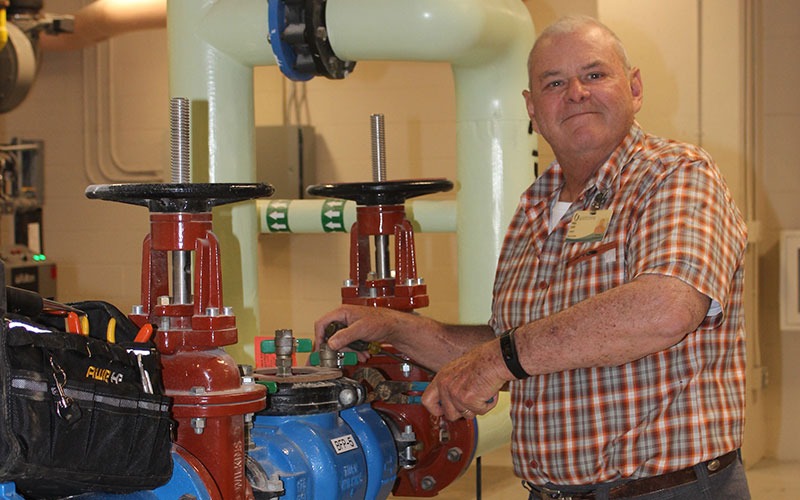We have stumbled on this article involving Backflow Testing below on the internet and think it made good sense to talk about it with you over here.

Yes, you need to backflow test your home's water supply to make sure that the water is free of contaminants and unsafe degrees of chemicals. Due to the tools needed as well as area for error, you should not try to perform backflow screening on your own. We recommend that you call an expert plumber every number of years to evaluate your water.
Backflow Can Impact Both You and Your City
Lots of cities establish backflow guidelines because dangerous heartburn can impact the public water system in addition to a single building. Modern cities have backflow devices in place that secure the water supply that comes from the majority of houses and commercial properties. The actual risk originates from irrigation systems, which can damage the supply of water with toxic fertilizers, manure, and various other chemicals.
What Triggers Backflow?
A regular root cause of backflow is a loss of water stress that causes the water to siphon back right into the water supply. An instance is cleaning out a paint bucket using a pipe. You fill up the paint pail up with water, leaving the pipe in the bucket. After some time, there is a loss in water stress and the hose pipe starts to suck the water back into the water system. As you can think of, there are now chemicals from the paint that are getting in the water system, possibly posing a hazard. Sadly, many people are not also knowledgeable about backflow testing, yet there are lots of reasons that it's so vital.
Backflow Testing is Called For by Law in Specific Cities
Depending on where you live, you may really be needed by legislation to backflow test your law. Iowa City maintains a record of all properties offered by the city's water supply. The city calls for that certain "high-hazard" facilities undergo backflow screening. In some cases, properties such as residences and also apartment buildings are impacted.
You Can Prevent Heartburn
The major function of a heartburn device is to stop water from moving backward into your water supply. Plumbings mount the device on the pipelines in your home to make sure that the water only streams in the correct direction.
What is Heartburn?
In other words, backflow is when water moves upwards-- the contrary instructions in the plumbing system. This is additionally known as "backpressure." When the water relocates this direction, it can mix with hazardous contaminants and posture a risk.
Call a Plumber to Examine for Backflow Prior To It is Too Late
A plumbing company can promptly check your residence's water to establish if there are any type of harmful chemical degrees. As well as if you do discover that your water has high degrees of toxins, a plumber can quickly mount a heartburn prevention gadget.
Yes, you need to backflow test your home's water supply to make sure that the water is totally free of toxins as well as dangerous levels of chemicals. Lots of cities establish backflow standards since unsafe backflow can impact the public water supply in enhancement to a single structure. A normal cause of backflow is a loss of water stress that triggers the water to siphon back right into the water supply. After some time, there is a loss in water pressure as well as the pipe begins to suck the water back right into the water supply. The major purpose of a backflow gadget is to protect against water from flowing backwards into your water supply.
Backflow Testing: What Is It, and Why Is It Necessary?
What Is Backflow?
Backflow is exactly what you might imagine this somewhat gross-sounding word to mean. It is contaminated water that has reversed flow, and as a result, enters into the clean water lines of homes and businesses. Backflow is typically caused by a significant change in water pressure. This can be due to a water main break, frozen pipes or an unexpectedly high demand on the water system. It can occur at any cross-connection between clean and dirty water in residential, commercial or industrial water lines. And the worst part – backflow can contain hazardous materials like human waste, pesticides or chemicals. Needless to say, it poses very, very serious health concerns, not to mention the potential for a heap-load of expensive stress!
Backflow Prevention and Testing
In order to safeguard against backflow in standing structures, a backflow prevention device should be installed by a trusted team of professionals. Once installed, if there should ever be an unexpected or dramatic change in water pressure, the device will prevent backflow from entering into the clean water supply system. But, again, it’s important that this device is properly installed by a professional so that they can test it and ensure that the clean water line remains contaminant free. This really is key.
While personal standards and responsibilities should maintain certain routine testing requirements, there are already municipal codes in place that require annual testing of these backflow prevention devices. This ensures that they are functioning properly and that no hazardous contaminants are spilling out into the clean water supply. If, however, testing of any device is not completed on time, you should know that a property or business’ water supply might be interrupted, and the property owner might even face fines. So, to avoid this from happening to you, we recommend scheduling a backflow test well in advance.
Fortunately, here at Tritan, we can help schedule and carry out backflow testing for your property. We provide a variety of backflow-related services, including prevention device installation and testing. Call us today and make sure that this stressful problem doesn’t happen to you and your property or business.
https://www.tritan-plumbing.com/blog/2018/february/backflow-testing-what-is-it-and-why-is-it-necess/

As a person who reads about Backflow Prevention, I think sharing that portion was valuable. Sharing is nice. Helping people is fun. Thanks a bunch for your time. Please check up our site back soon.
Schedule And Pricing
Comments on “Why I Execute a Backflow Test for My Water?”